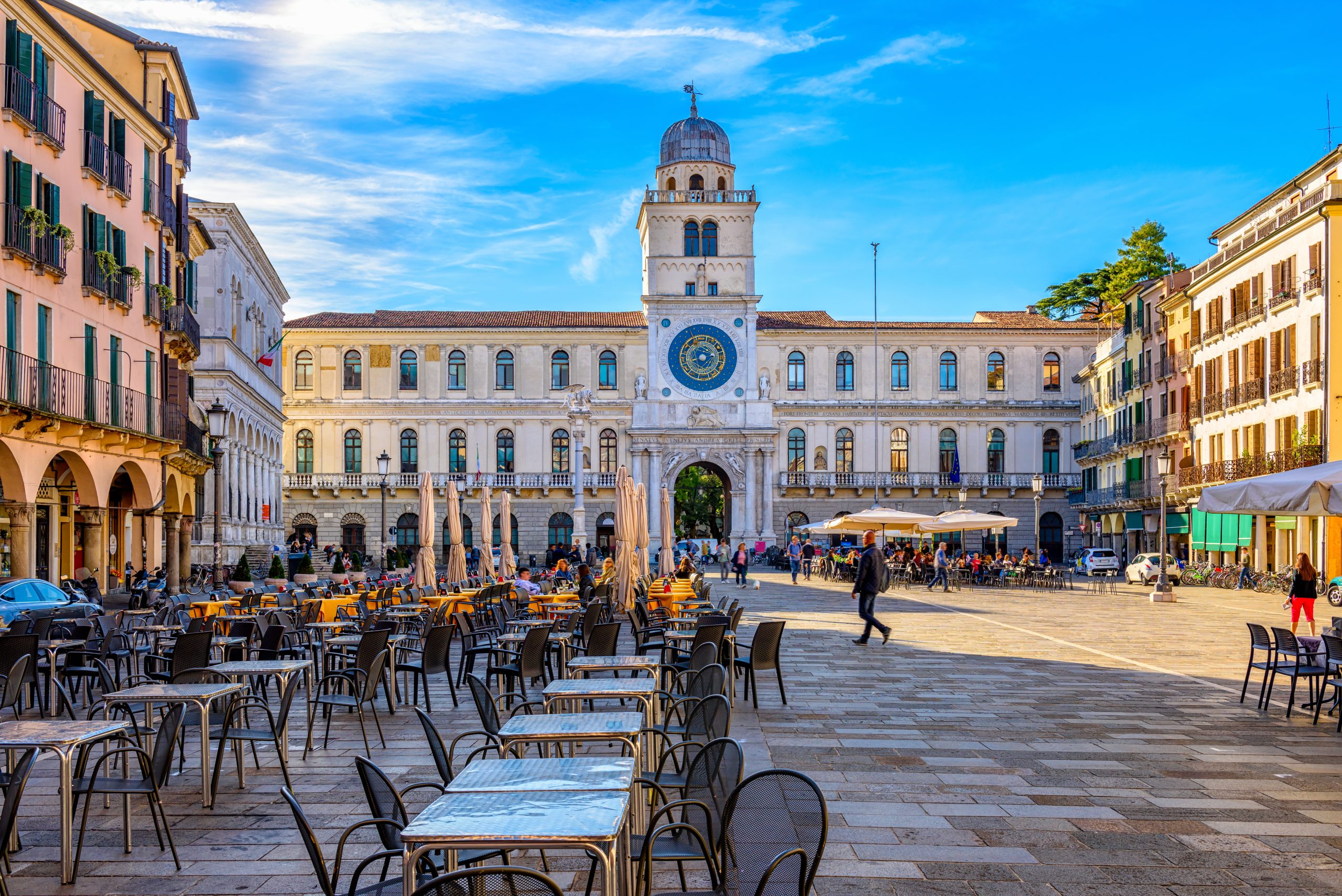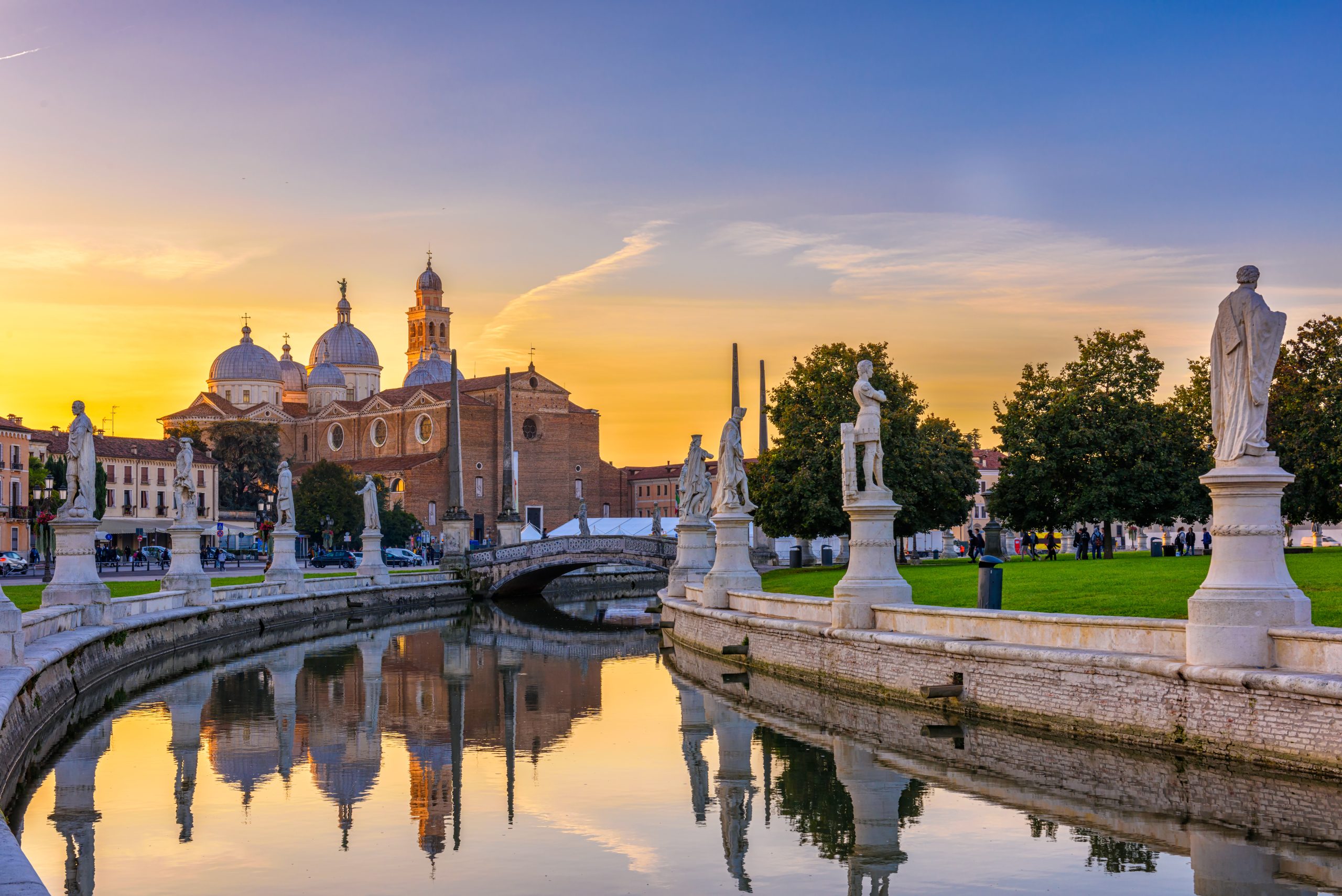University of Padua
University of Padua
Undergraduate Postgraduate – Single Cycle – Master I
Biology – Chemistry – Economics – Engineering – Humanities – Languages – Physics – Politics – Psichology – Sciences
Up to €3000
The University of Padua, founded in 1222, is considered Italy’s second-oldest university (after the University of Bologna). Its historical roots contribute significantly to its prestige and reputation.
The renowned scientist Galileo Galilei served as a professor at the University of Padua from 1592 to 1610. During his tenure, he conducted groundbreaking experiments and made important astronomical discoveries, including observations of the moon’s surface and the phases of Venus.
The university’s Anatomical Theater, built in 1594, is one of the oldest surviving anatomical theaters in the world. It was used for anatomical dissections and lectures, and it remains a fascinating testament to the history of medical education.
Padua was part of the Venetian Republic for many centuries, and the university played a vital role in maintaining Venetian cultural and intellectual traditions during this period.
The university’s official symbol is the Latin phrase “Nostra Signora di Antiochia,” which refers to the Madonna of Antioch, and it reflects the university’s historical ties to the Catholic Church.
The University of Padua has produced several Nobel laureates, including famous physicists Enrico Fermi and Carlo Rubbia, and neurologist Rita Levi-Montalcini.
Throughout its history, the university has been a center of international academic exchange and collaboration. It continues to attract students and scholars from around the world, contributing to its global reputation.
The university’s academic excellence extends across a wide range of fields, from the arts and humanities to the sciences and engineering. It offers diverse programs, making it a hub for interdisciplinary research and study.
The university houses several historic libraries, including the Biblioteca Antoniana and the Biblioteca Civica Bertoliana, which contain rare manuscripts, ancient texts, and valuable resources for scholars.
Situated in the heart of the Veneto region, Padua is a dynamic and culturally rich city with a thriving student community. Its central location allows for easy access to other iconic Italian cities like Venice and Verona.
Undergraduate
- Animal care
- Earth and climate dynamics
- Information Engineering
- Psychological Science
- Techniques and methods in psychological science
Postgraduate
- Banking and Finance
- Aerospace Engineering
- Applied Economics
- Astrophysics and cosmology
- Chemical and Process Engineering
- Chemistry
- Clinical, social and intercultural psychology
- Cognitive Neuroscience
- Computational Finance
- Computer engineering
- Control systems engineering
- Cybersecurity
- Data Science
- Electrical Engineering
- Electronic Engineering
- Energy Engineering
- Environment and sustainability
- Global communication policies
- Evolutionary biology
- Food and Health
- Food industry engineering
- Forest Sciences
- Geophysics for natural risks and resources
- Human Rights and Multi-level Governance
- ICT for Internet and multimedia
- Management engineering
- International Cybersecurity
- Italian Food and Wine
- English Studies
- Specialized Translation
- Local Development
- Management of educational services
- Management for Sustainable Firms
- Marine Biology
- Materials Engineering
- Mathematics
- Medical Biotechnologies
- Pharmaceutical Biotechnologies
- Physics
- Developmental and educational psychology
- Quantitative and Computational Biosciences
- Applied sciences to cultural heritage
- Historical Sciences
- Strategies in Communication
- Sustainable agriculture
- Sustainable Territorial Development
- Water and geological risk engineering
Single Cycle
- Medicine and Surgery
Master first level
- Master in International Business for Small and Medium Enterprises
- Master in Business and Management – MBM: industry specific fragrance and cosmetic sector
- Master in Low-tech Circular Economy Europe/Africa
- Master in Personal Construct Psychology and Counselling
- Master in Psychological Skills in Intercultural Settings
- Master in Coaching Organizzativo: Leadership e Lifelong Learning
- Master in Design and Development of Vehicle Dynamics
Regional Scholarships
- Based on academic achievement
- Based on ISEE (family income)
Life in Padua
Padua, or Padova in Italian, is a charming city in the Veneto region of Italy, known for its rich history, cultural heritage, and vibrant atmosphere. If you’re planning a visit to Padua, here are some of the top things to see and do:
- Basilica of Saint Anthony (Basilica di Sant’Antonio): This magnificent basilica is dedicated to Saint Anthony of Padua and is one of the most important pilgrimage sites in the Catholic world. The interior is adorned with stunning frescoes, sculptures, and the tomb of Saint Anthony.
- Prato della Valle: This elliptical-shaped square is one of Europe’s largest and is surrounded by a canal lined with statues. It’s a great place for a leisurely stroll, picnicking, or people-watching.
- Scrovegni Chapel (Cappella degli Scrovegni): Visit this small chapel to admire its breathtaking frescoes by the Italian painter Giotto. The frescoes are considered masterpieces of Western art and depict various biblical scenes.
- Padua’s Historic Center: Explore the charming streets and alleys of Padua’s historic center, where you’ll find medieval architecture, cozy cafes, and local shops. Don’t miss the Piazza dei Signori and Palazzo della Ragione.
- Botanical Garden (Orto Botanico): Founded in 1545, this botanical garden is one of the world’s oldest. It’s a UNESCO World Heritage Site and boasts a diverse collection of plants and trees. It’s a peaceful oasis in the heart of the city.
- University of Padua (Università degli Studi di Padova): Founded in 1222, this is one of Europe’s oldest universities. You can visit the historic lecture halls, courtyards, and the anatomical theater where Galileo once taught.
- Euganean Hills (Colli Euganei): Enjoy outdoor activities such as hiking and cycling in the scenic Euganean Hills, a group of volcanic hills just outside Padua. There are also thermal baths in this area for relaxation.
- Market Visits: Visit the daily markets in Padua, such as Piazza delle Erbe and Piazza dei Frutti, to experience the lively atmosphere, purchase fresh produce, and sample local specialties.
- Local Cuisine: Savor the delicious Venetian and Paduan cuisine at local trattorias. Don’t forget to try dishes like bigoli (thick pasta), baccalà alla vicentina (salt cod), and tiramisu, which is believed to have originated in the region.
Tips for students: Take a short trip outside of Padua to explore some of the beautiful Venetian villas in the surrounding countryside. Villa Pisani in Stra and Villa Barbaro in Maser are particularly noteworthy.
Parexstudy
Consulting for University of Padua
If you are interested in this university, please get in touch with us through the form. We will answer as soon as possible all your questions and provide you with any helpful information about departments, fees, accommodation, and scholarships. Go ahead!


